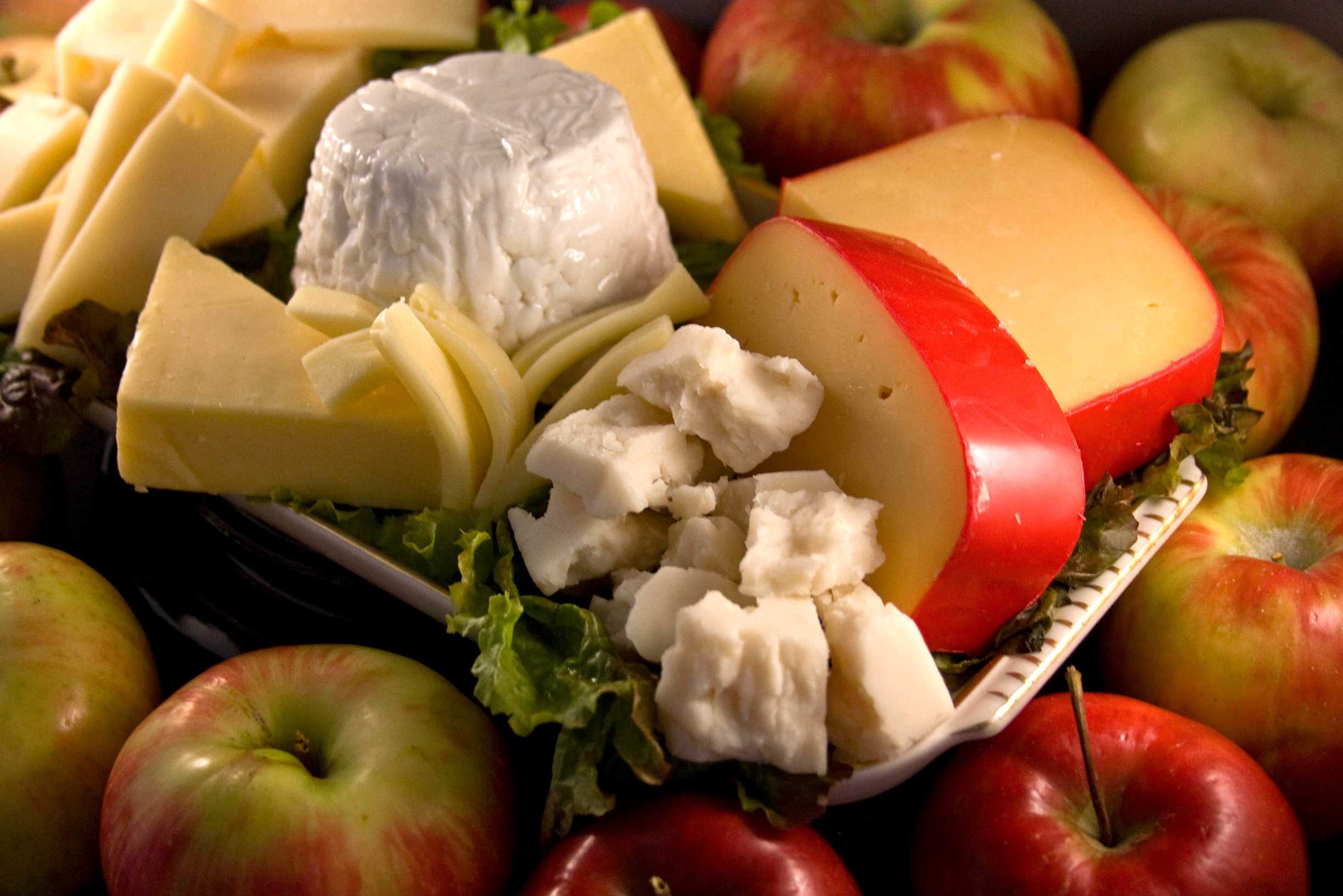 Karli Cadel / Staff Photographer
Karli Cadel / Staff PhotographerWhen most people think of cheese, they reminisce about the numerous birthday parties spent at Chuck E. Cheese and childhood lunches consisting of macaroni and cheese. What most people do not think of however, are the healthy facts about cheese.
Europeans have already caught on to the health benefits of cheese, with the French having consumed 51.3 pounds per person in 2006 while remaining svelte as opposed to the increasingly obese Americans who consumed 32.7 pounds per person in 2007, according to the Wisconsin Milk Marketing Board. By breaking down the different types of cheese and their nutritional values, you may find yourself asking: “Chuck E. who?”
There are many different varieties of cheeses and it can be valuable to find out the nutritional value of each one. Hundreds of different types exist, varying in texture, flavor and aroma, so an understanding of their differences is key in making sure that you eat the healthiest kinds. Depending on the serving, all cheeses provide a good amount of calcium, protein and phosphorous; all of which are necessary in maintaining a healthy body and immune system.
How cheese is created directly affects the type of nutrients and benefits it has. When whole milk, buttermilk or cream are used in the cheese-making process, they are more likely to produce cheeses that are high in fat and cholesterol as opposed to cheeses that are made with reduced fat or nonfat milk. The manufacturing process also makes a difference in the nutrient content of cheese.
The calcium that cheese provides has multiple health benefits. For example, many popular cheeses such as American, Cheddar and Swiss have shown to decrease the risk of cavities because of the calcium they provide that help to protect tooth enamel. Because there is such a high dosage of calcium, with about 200 milligrams in a 1.1-ounce of cheddar cheese, according to the National Dairy Council, cheese can also help to reduce the possibility of developing the bone disease osteoporosis.
Dairy farmers have caught on to the importance of reducing the production of fatty cheeses and are increasing the amount of cheeses with vitamins and nutrients. The company Cabot Cheese has begun producing reduced-fat cheeses with omega-3s, which are “good fats” that help in eye, heart and brain functions. While Cabot is based out of Vermont, its healthy cheeses can be purchased online and shipped to your home by ordering from its Web site www.shopcabot.com.
One misconception that many lactose-intolerant people have is that they are unable to eat any type of cheese because of its high content of lactose. However, this is incorrect, as most cheeses contain little to no lactose at all. According to the National Dairy Council, one ounce of American cheese contains at most two grams of lactose, which is hardly enough to cause problems. However, soy options do exist and can be found in healthy grocery stores, with Mozzarella, Swiss and Provolone as available flavorings.
By incorporating cheese into your diet, not only will you increase your intake of nutrients and vitamins, but you will also reduce your risk of health problems. The American Dairy Association recommends three servings of dairy each day to maintain a healthy lifestyle, and what better and easier way to achieve it than with a few cheese and crackers, some string cheese or a grilled cheese sandwich. Next time you go for a snack, grab some cheese please!









